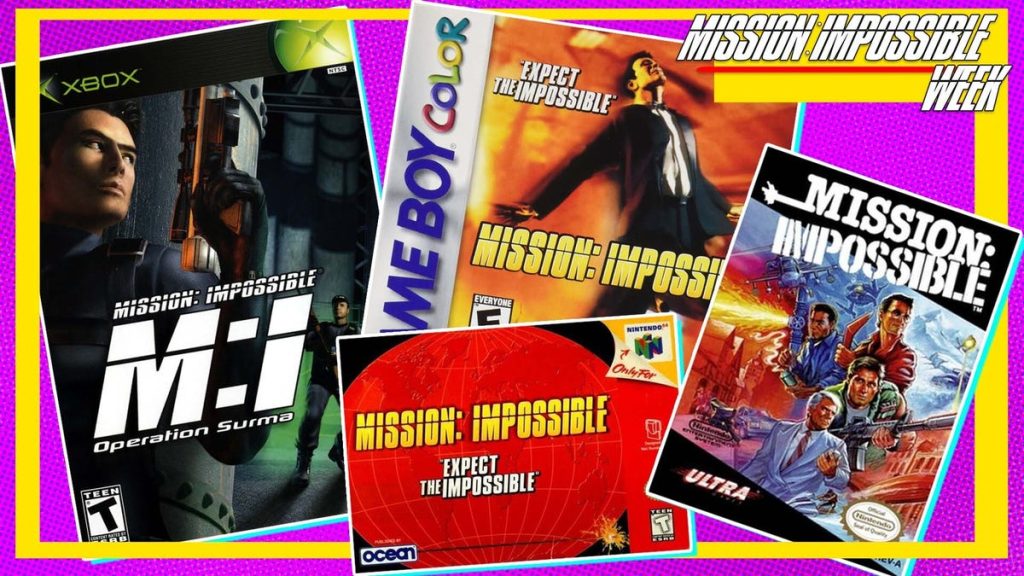The Mission: Impossible franchise has captivated audiences for decades, blending espionage, thrilling action, and intricate plots into a cinematic marvel. As the franchise gained traction in the late 1990s, it naturally expanded into the gaming world. The first foray into this realm came with the release of Mission: Impossible for the Nintendo 64 and PlayStation in 1998. Although the game was meant to be a tie-in with the first Tom Cruise blockbuster, its development journey was anything but straightforward.
From Concept to Creation
The project originally found its home with Ocean, a studio recognized for its adaptations of film and television properties into video games. Ocean had a history of transforming cinematic narratives into engaging, albeit often simplistic, side-scrolling action titles like RoboCop and Total Recall. However, the ambition behind Mission: Impossible was markedly different.
Unlike previous adaptations, the plan was to emulate the groundbreaking first-person shooter style of GoldenEye 007, which had previously redefined expectations for console FPS games. Unfortunately, a series of complications plagued the project. After three years of development, it became clear that the aging Nintendo 64 hardware had limitations that could not accommodate the developers’ lofty ambitions. In 1997, Infogrames acquired Ocean, prompting a complete overhaul of the project.
As the new team took charge, they faced multiple hurdles. Among the most significant was the game’s initial performance, which reportedly clocked in at an abysmal four frames per second. The restrictive guidelines from Viacom, which held the film rights, further complicated the vision, as they limited the use of gun-based violence. Moreover, Tom Cruise himself opted not to lend his likeness or voice to the game, creating additional challenges for the developers.
Struggles and Successes
In light of these challenges, the development team faced a grueling schedule, working extensive hours to meet deadlines. Despite these struggles, Mission: Impossible still managed to carve out a place in the gaming market. Upon its release, the game was met with a mixed reception. Though it received a less-than-stellar score of 6.6 from IGN, it demonstrated surprising commercial viability, selling over a million copies. Such figures highlight the complex relationship between critical reception and commercial success in the gaming industry.
The game’s mediocre reviews can be attributed to a number of factors: the limited graphical capabilities of the Nintendo 64, the odd controls, and the constraints imposed by both Viacom and Cruise. However, even with these limitations, players were drawn to the game’s ambitious design and were willing to overlook its shortcomings.
Market Impact and Legacy
The commercial success of Mission: Impossible set the stage for future adaptations of the franchise, ultimately leading to a series of sequels across various platforms. This initial venture not only demonstrated that film-based video games could achieve commercial success, but also paved the way for newer titles in the series to fully embrace the technological advancements of more powerful gaming systems. According to a report from Statista, the global video game market is projected to exceed $200 billion by 2023, indicating a ripe opportunity for new adaptations.
Today, Mission: Impossible continues to inspire a new generation of games, including mobile titles and most recently, the anticipated Mission: Impossible – Dead Reckoning Part One, set to coincide with the release of the latest film installment. These newer titles benefit from advanced graphics and immersive gameplay mechanics, drawing players into the high-stakes world of espionage with a much richer experience than their predecessors.
In summary, while the 1998 iteration of Mission: Impossible faced numerous obstacles, it still stands as a notable entry in the history of video games based on movies. Its commercial success paved the way for future adaptations, illustrating the growing importance of video gaming as a multi-dimensional entertainment industry. As technology advances, the potential for new adaptations continues to expand, ensuring the legacy of Mission: Impossible lives on across both film and interactive mediums.
Quick Reference Table
| Game Title | Release Year | Primary Platform | Sales Figures | Critical Score (IGN) |
|---|---|---|---|---|
| Mission: Impossible | 1998 | N64, PlayStation | Over 1 million copies | 6.6 |

